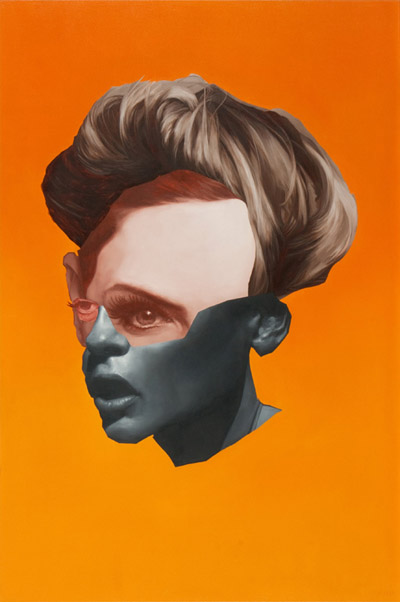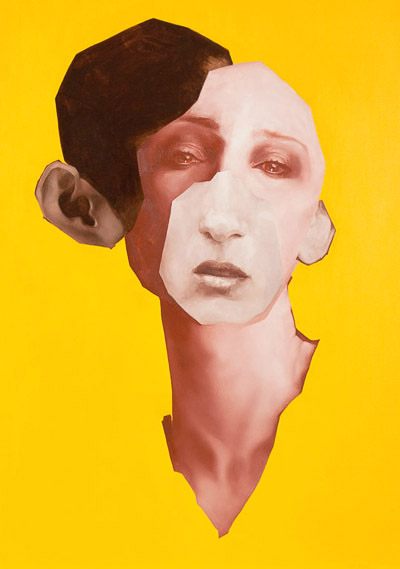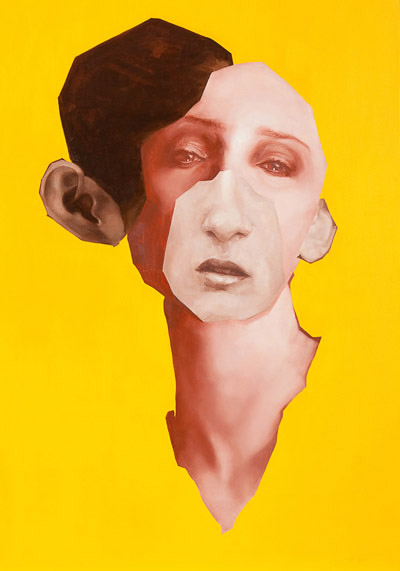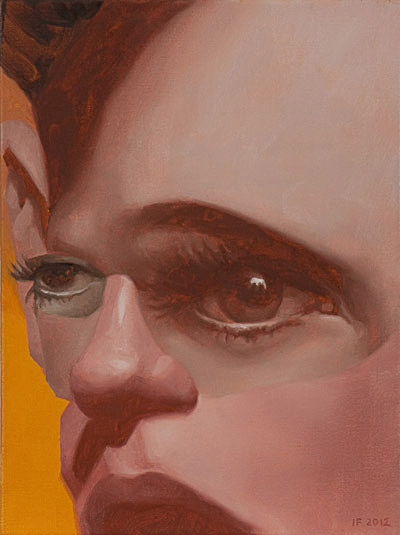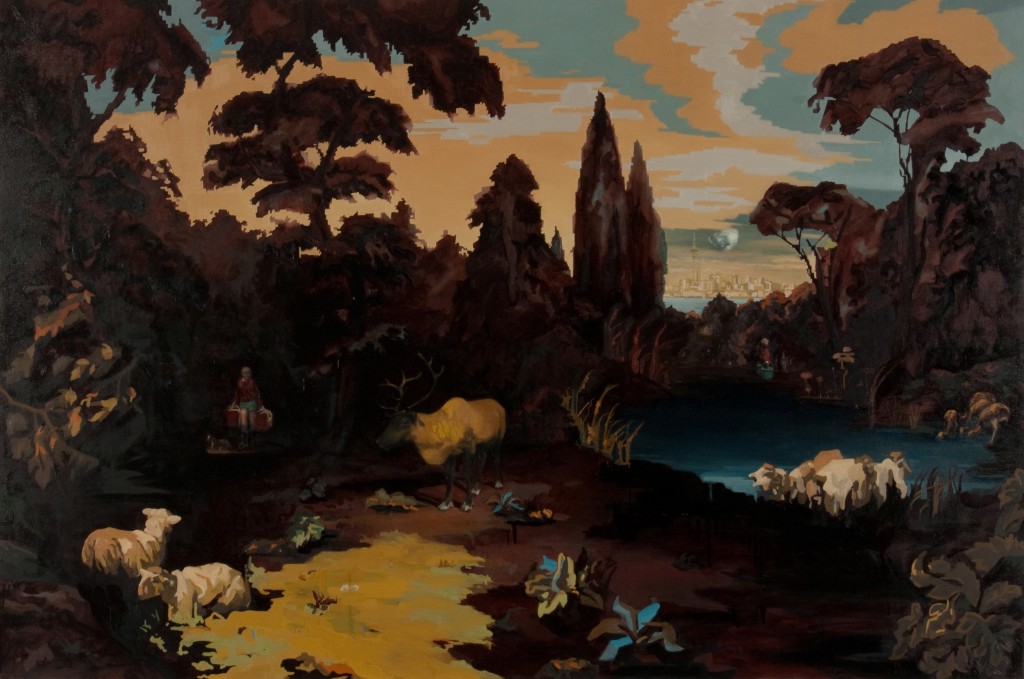Colossal exhibition 2012
By Kirsty Lillico
Suite Gallery, Wellington, New Zealand (29 February – 31 March) 2012
Since the invention of the Daguerreotype in the 19th century, photography has had a profound influence on the art of painting. It has been argued that, even before the advent of the printed photograph, the Old Masters used ‘Camera Obscura’ and other optical devices as drawing aids. But this influence is not a one-way street. Initially, photographers imitated painterly effects in order to claim artistic status. Today, the two disciplines continue to influence each other, with many contemporary artists working across mediums of the moving image, photography, performance and painting.
Inspired by the work of Hannah Hoch and Dada, Irene Ferguson created a series of collaged portraits, with images sourced from fashion and beauty advertising, as well as her own photographs, digitally cut-and-paste with the aid of Photoshop.
Ferguson has reinterpreted these collages in paint, translating the sharply cut edges of the collage, and retaining the disjunction of the separate parts of the face through shifts in scale, viewpoint, tonal range, and hue. At the same time, she has paid close attention to modeling form, applying the technique of ‘grisaille’-a monochromatic under painting used by artists in the early Renaissance. There is an uneasy relationship between flatness and depth.
The disembodied heads float in a gradated field of vivid colour-which evokes the Photoshop void, and the silk-screened portraits of Andy Warhol. But, if Warhol subjects were rich and famous, and Ferguson has previously painted friends and associates, then who are we to suppose ‘Gale’ and ‘Dawn’ might be?
Although their constituent features- a pair of bee-stung lips, a set of lush eyelashes, and a long swan-like neck- conform to modes of contemporary beauty, the distortions that occur through their displacement create a disturbing effect.
Adopting the role of a Dr Frankenstein- like creator, the artist presents a parade of ‘recognizable nobodies’, stitched together from the homogenously beautiful faces of the mass media, to create fractured wholes.
Are these visions of science fiction? Or the product of present-day medical technologies? The smell of the science laboratory is conjured also by the pairing of each portrait with a ‘clone’, compelling the viewer to play a game of ‘spot the difference’.
With these darkly humorous works, Irene Ferguson channels a discussion of identity and representation in a media-saturated digital age, through her extensive knowledge of the history of painting extending the tradition of portraiture into a contemporary space.
